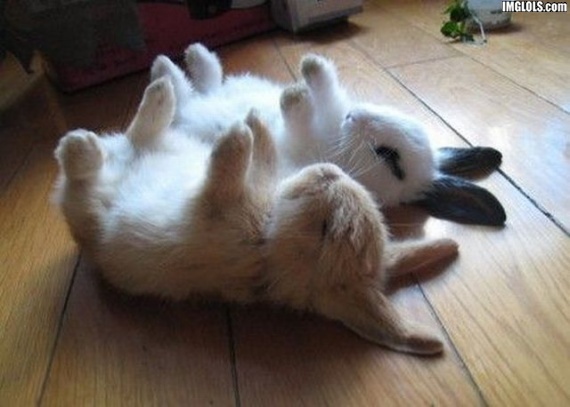
Some rabbit facts about these hopping specialists that have
been around for millions of years, and it doesn't look like they're
leaving anytime soon.
A wild hare surveys his surroundings before continuing on his way.
iStockphoto.com/Igor Kisselev
Call
them wascally. Call them varmints. Call them a great 4-H project or a
quiet pet for the apartment dweller. If you’re somebunny who loves
rabbits, hop on over. You’ll enjoy this.
Let’s
say you were working in your garden 48 million years ago and noticed
some damage to your lettuce. Uh-oh. Once you were done hollering things
we can’t print, scientists say you could have easily blamed a rabbit: By
that time, bunnies had been mammals in their own right for a few
million years. Even back then, says science, lagomorphs (members of the
order Lagomorpha) hopped.
Hopping
the globe, ancient Phoenicians spread rabbits by using them as a trade
commodity, and warring Romans considered rabbits to be mobile meals.
Although they are native to North America, rabbits weren’t introduced to
Great Britain until the 12th century. At that time, bunnies became
domesticated. Today, because of their adaptability, wild rabbits are
found on every continent except Antarctica (but give them time).
Though
they come in dozens of sizes, shapes and colors, all domestic rabbits
are descended from the European hare. Cute as a … well, cute as a bunny,
you can find pet rabbits that are 4 inches long and a few ounces, fully
grown. Conversely, you can own a rabbit the size and weight of a small
Cocker Spaniel.
Respect the ears
Never
pick up a rabbit by its ears, and you need to respect those long
appendages: Rabbit ears can rotate up to 270 degrees and allow the
animal to pick up two different sounds from two different directions at
the same time. Because a rabbit is unable to sweat, its ears are rich
with blood vessels that dissipate heat for a hot, cross bunny. Rabbit
ears, by the way, also come in all sizes and shapes: Some of the smaller
breeds have un-bunny-like nubs for ears, and lop breeds have ears that
flop downward. Alas, rabbit ears on your television only come in one
style.
Much has been made about
the rabbit’s legendary breeding ability, and for good reason. A doe
rabbit can get pregnant at 3 months of age, and with gestation at just
28 to 32 days, she can carry several litters a year. Each litter
averages four to 12 kits. The largest litter on record is 24 tiny
bunlets, which leads us to this hare-raising fact: Assuming that all the
offspring survive, one mating pair of rabbits could produce four
million descendants in one year’s time. Wouldn’t that make you hopping
mad?
Speaking of baby bunnies,
one of the differences between rabbits and hares is that rabbits are
born blind and naked, while hares are born with hair and can see at
birth.
A bunny’s appetite
Gardeners
know all too well what rabbits like to eat, but most people don’t know
that rabbits also like bananas, mint, bok choy, papayas and pineapples.
Though you might consider this an ultra-healthy diet, you shouldn’t be
surprised if Bugs eats his own droppings, too. Rabbits have digestive
systems similar to cows, but instead of chewing cud, they re-ingest
certain nutrients through soft fecal matter. Despite that – which is
pretty icky – rabbits don’t have the ability to vomit.
But
let’s say you’ve been charmed by a bunny and found yourself a new pet.
Rabbits are clean and quiet, although they can purr, scream, snore and
snort in certain circumstances. They’re perfectly happy to live in a
cage, which is a good thing: Pet rabbits chew and can be destructive,
and unaltered males will spray their territory. If you’ve got patience,
you can teach a rabbit to “beg,” use a litter box, enjoy being held,
play with toys and come when it’s called … all of which means that a
rabbit is no dumb bunny!
Terri Schlichenmeyer, book reviewer and trivia collector, lives in Wisconsin with two dogs and 11,000 books.
.








